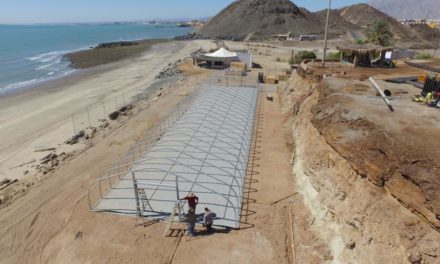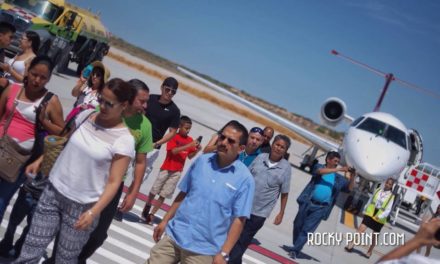I’ve been thinking lately about a quote, “Change is the only constant in life.”
Change first came Puerto Peñasco just a little more than 5 million years ago when a land mass was torn by tectonic forces from the mainland of what is now Mexico. Now, Baja California is the second longest peninsula on the planet. The Sea of Cortezis the youngest and one of the most diverse seas on earth. It lies between the Baja and the mainland, at 850 miles long and 130 miles wide and growing wider each year by about 3” between mainland and the tip of Baja. From the shallows of local estuaries to depths over 9,800 ft (3,000 m) this sea has it all. It’s been called “the aquarium of the world” by Jacques Cousteau.
Change came slowly as local natives lived sporadically on the shores of the mainland and Baja, but near fresh water sources, including the delta of what we call the Colorado River, and the Rio Sonoita River. The Yaqui and O’odham native Indians have lived in the Sonoran desert for thousands of years. Evidence of trade routes exist far into Arizona.
Change came when the Spanish explorers sailed far up into the waters and used the natural protection of the bay to rest their fleet. Ultimately, the Spanish claimed Mexico and after much struggle Mexico became an independent nation. The Gulf of California has had several names, but generally four stand out. Mar Bermejo (Vermillion Sea) is the first historically recorded name in 1539. Mar de Cortés (Sea of Cortez, Sea of Cortés) was used shortly after, with the “z” spelling first used by the French in the 1700’s. Mar Rojo (Red Sea) was used by some Spaniardsin the late 1500’s. And lastly the Golfo de California (Gulf of California) was also used in the late 1500’s. Today the names Mar de Cortés and Gulfo de California (and English versions) are common. The city is known by two names, one in English (Rocky Point) and one in Spanish (Puerto Peñasco or “Rocky Port”). In 1826, a retired member of the British Royal Navy was sailing in this area searching for pearls and precious metals. He named the area Rocky Point and it was identified as Rocky Point on marine maps until President Lázaro Cárdenas changed it to Puerto Punta Peñasco (Port Rocky Point). To simplify pronunciation, the English name lost the word “Port” and the Spanish name dropped “Punta”.
Change came again, after the Spanish America War and the political division of land was made between the United States of America and the United Mexican States. The Gadsden Purchase in 1854 created the current border lines. Because of lack of water there was no permanent settlement in what is now Puerto Peñasco until the 1920’s. Then through the 30’s and 40’s construction of a rail line through Puerto Peñasco connected it with the Baja and the rest of mainland Mexico and the town began to grow. Mostly Puerto Peñasco has been a fishing town. But again, with change, tourism has been a strong influence. A casual few sought the calm tranquil seas, and fishing throughout the 50’s, 60’s and 70’s. Then in the 90’s as foreign investment laws changed and condominiums were built and tourism flourished.
Which brings us to present day. Change again is in the air with the construction of the cruise ship home port. There are many arguments both for and against this latest change. Puerto Peñasco will most certainly change. It has though out all of history. There will be less unemployment and more opportunities for economic growth, real estate values will increase, and service industries will flourish (airport, taxis, and restaurants). It’s natural for each of us to process change in stages and we’ll also process the changes differently. It’s OK, embrace change. It reminds me of another quote, “Change is the law of life. And those who look only to the past or present are certain to miss the future. John F. Kennedy.”
Change is the only constant








